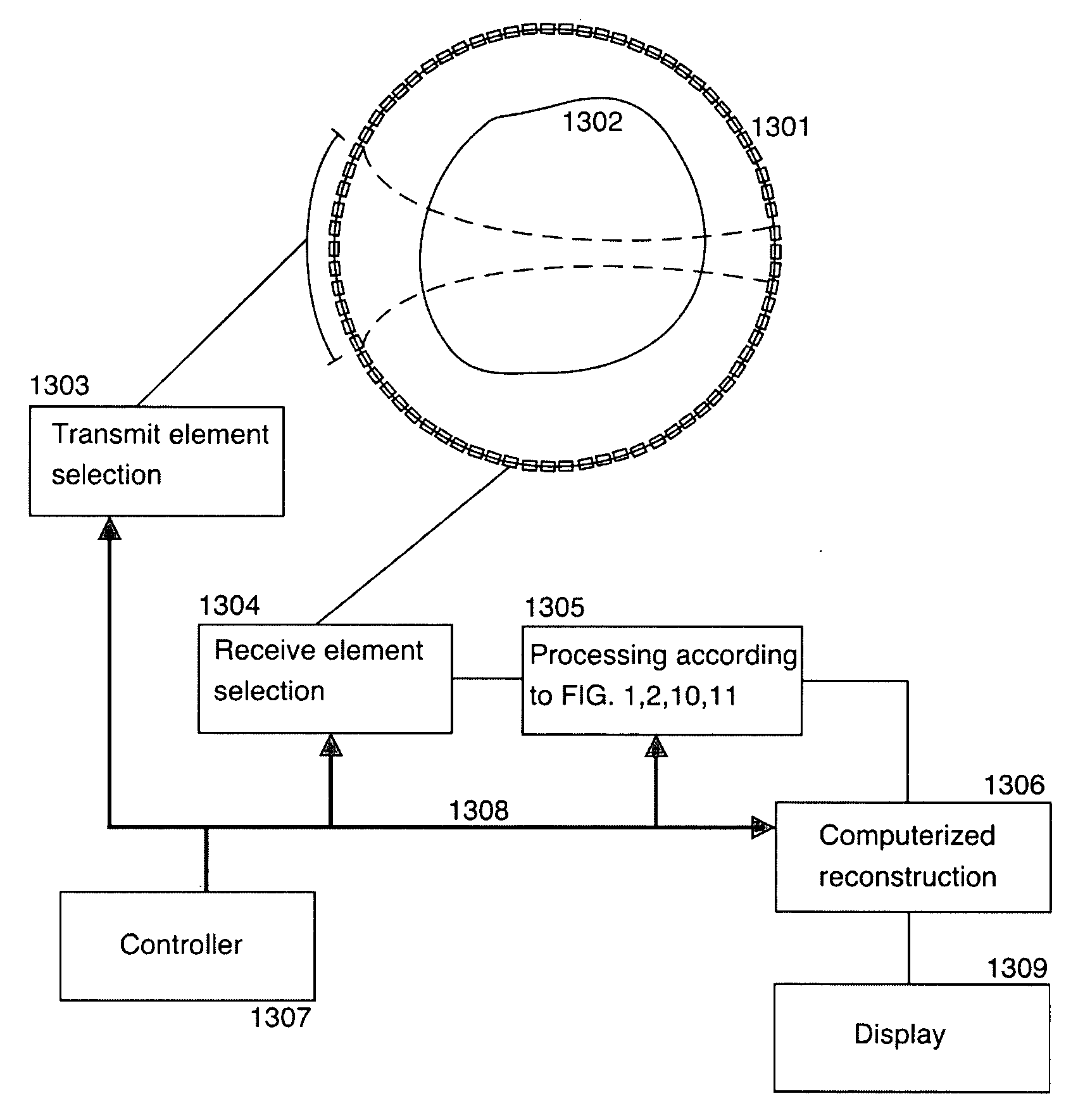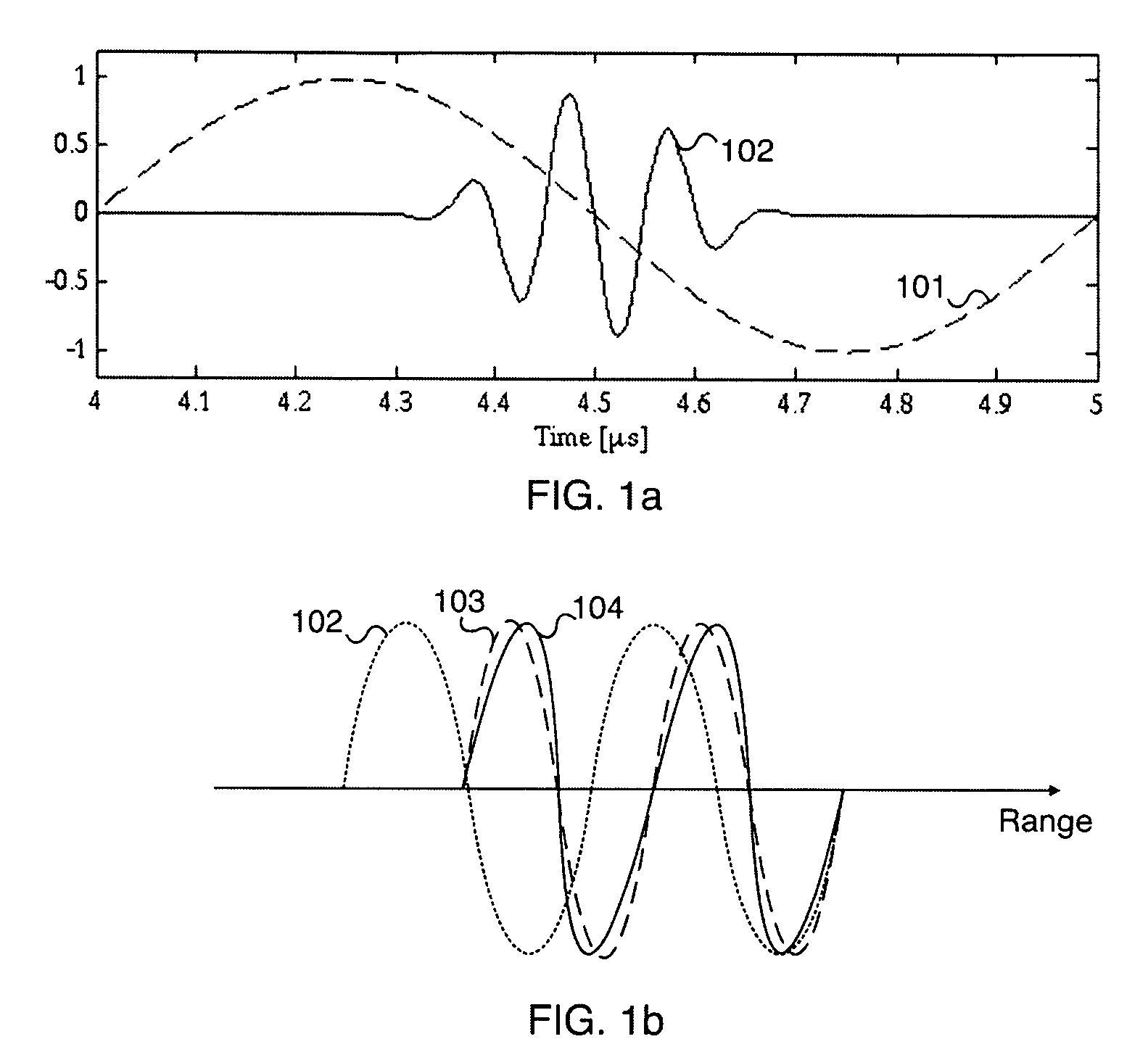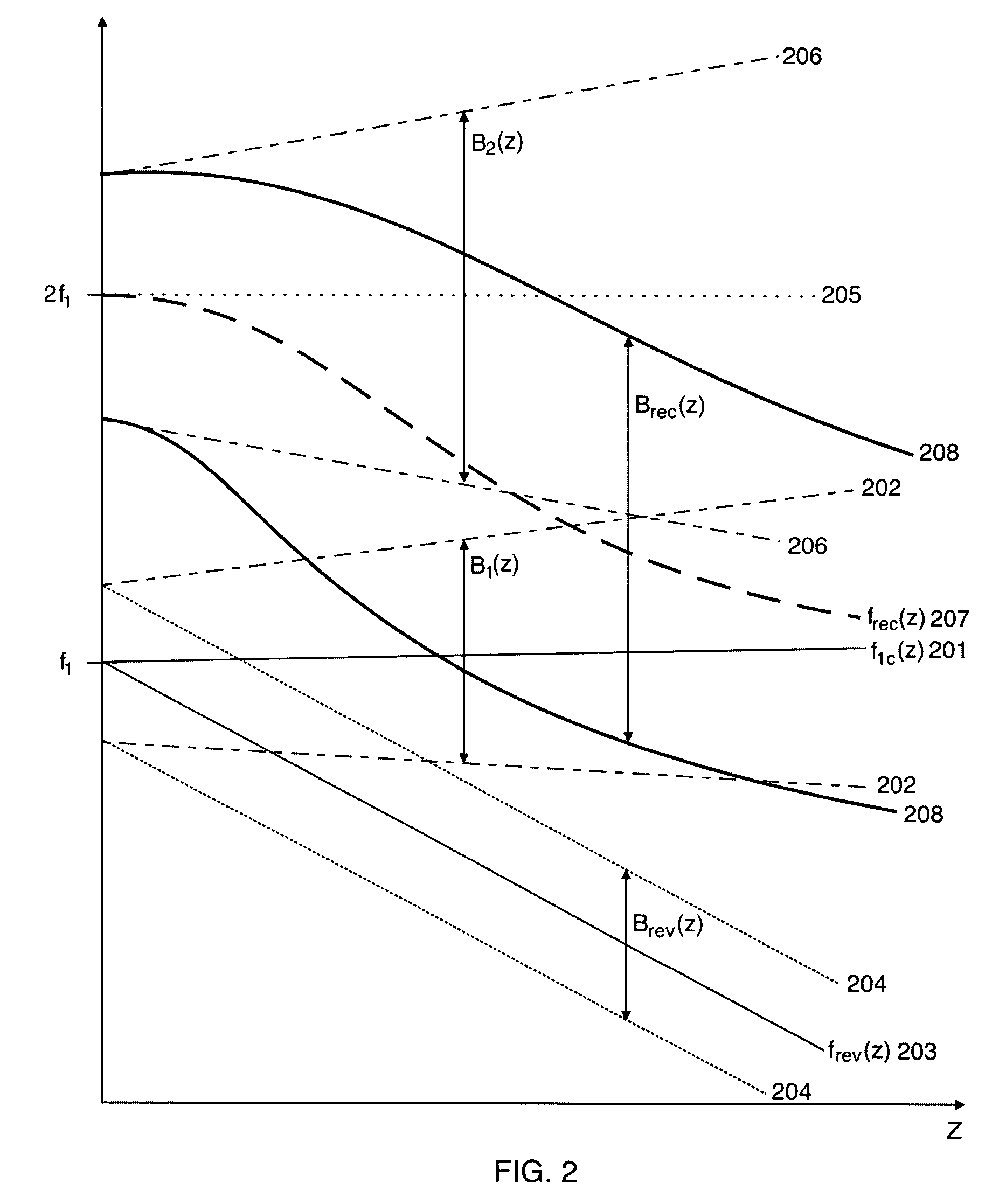Ultrasound imaging by nonlinear low frequency manipulation of high frequency scattering and propagation properties
- Summary
- Abstract
- Description
- Claims
- Application Information
AI Technical Summary
Benefits of technology
Problems solved by technology
Method used
Image
Examples
Embodiment Construction
[0051] Ultrasound bulk waves in homogeneous materials are in the linear regime governed by a linear wave equation where the bulk wave propagation velocity c0 is determined by the mass density ρ0 and the bulk compressibility κ0 of the homogeneous propagation medium. The bulk compressibility is in the linear approximation of bulk elasticity defined through the relative volume compression of the material as δ VΔ V=-∇ψ_=κ0p(1)
where δV is the relative volume compression of a small volume ΔV subject to the pressure p, and ψ is the particle displacement in the material so that −∇ψ is the relative volume compression. [0052] In soft tissue, there are spatial fluctuations in the compressibility and mass density that produce scattering of ultrasound from the tissue. We denote the spatially varying mass density and compressibility for low pressure amplitudes as ρ0(r) and κ0(r), where r is the spatial coordinate. The linear back-scattering coefficient from a local point r is then k2υ0(...
PUM
 Login to View More
Login to View More Abstract
Description
Claims
Application Information
 Login to View More
Login to View More - R&D
- Intellectual Property
- Life Sciences
- Materials
- Tech Scout
- Unparalleled Data Quality
- Higher Quality Content
- 60% Fewer Hallucinations
Browse by: Latest US Patents, China's latest patents, Technical Efficacy Thesaurus, Application Domain, Technology Topic, Popular Technical Reports.
© 2025 PatSnap. All rights reserved.Legal|Privacy policy|Modern Slavery Act Transparency Statement|Sitemap|About US| Contact US: help@patsnap.com



